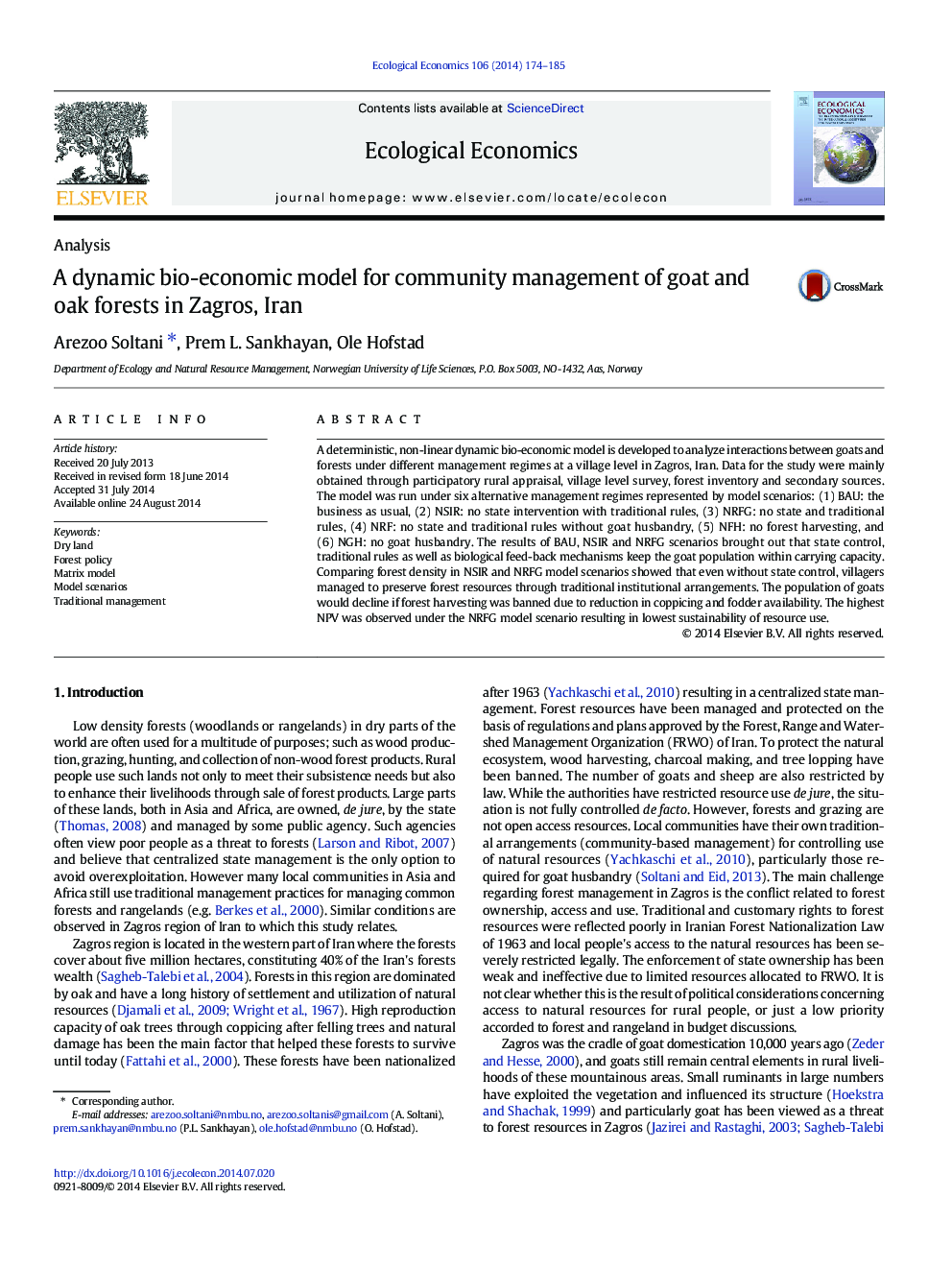| Article ID | Journal | Published Year | Pages | File Type |
|---|---|---|---|---|
| 5049649 | Ecological Economics | 2014 | 12 Pages |
â¢State forest policy of prohibiting wood harvest reduces people's welfare.â¢Combined production of goats and wood is a better economic solution in Zagros if institutional factors are upheld.â¢The tragedy of commons is avoided as a result of interactions among biological and institutional factors.
A deterministic, non-linear dynamic bio-economic model is developed to analyze interactions between goats and forests under different management regimes at a village level in Zagros, Iran. Data for the study were mainly obtained through participatory rural appraisal, village level survey, forest inventory and secondary sources. The model was run under six alternative management regimes represented by model scenarios: (1) BAU: the business as usual, (2) NSIR: no state intervention with traditional rules, (3) NRFG: no state and traditional rules, (4) NRF: no state and traditional rules without goat husbandry, (5) NFH: no forest harvesting, and (6) NGH: no goat husbandry. The results of BAU, NSIR and NRFG scenarios brought out that state control, traditional rules as well as biological feed-back mechanisms keep the goat population within carrying capacity. Comparing forest density in NSIR and NRFG model scenarios showed that even without state control, villagers managed to preserve forest resources through traditional institutional arrangements. The population of goats would decline if forest harvesting was banned due to reduction in coppicing and fodder availability. The highest NPV was observed under the NRFG model scenario resulting in lowest sustainability of resource use.
